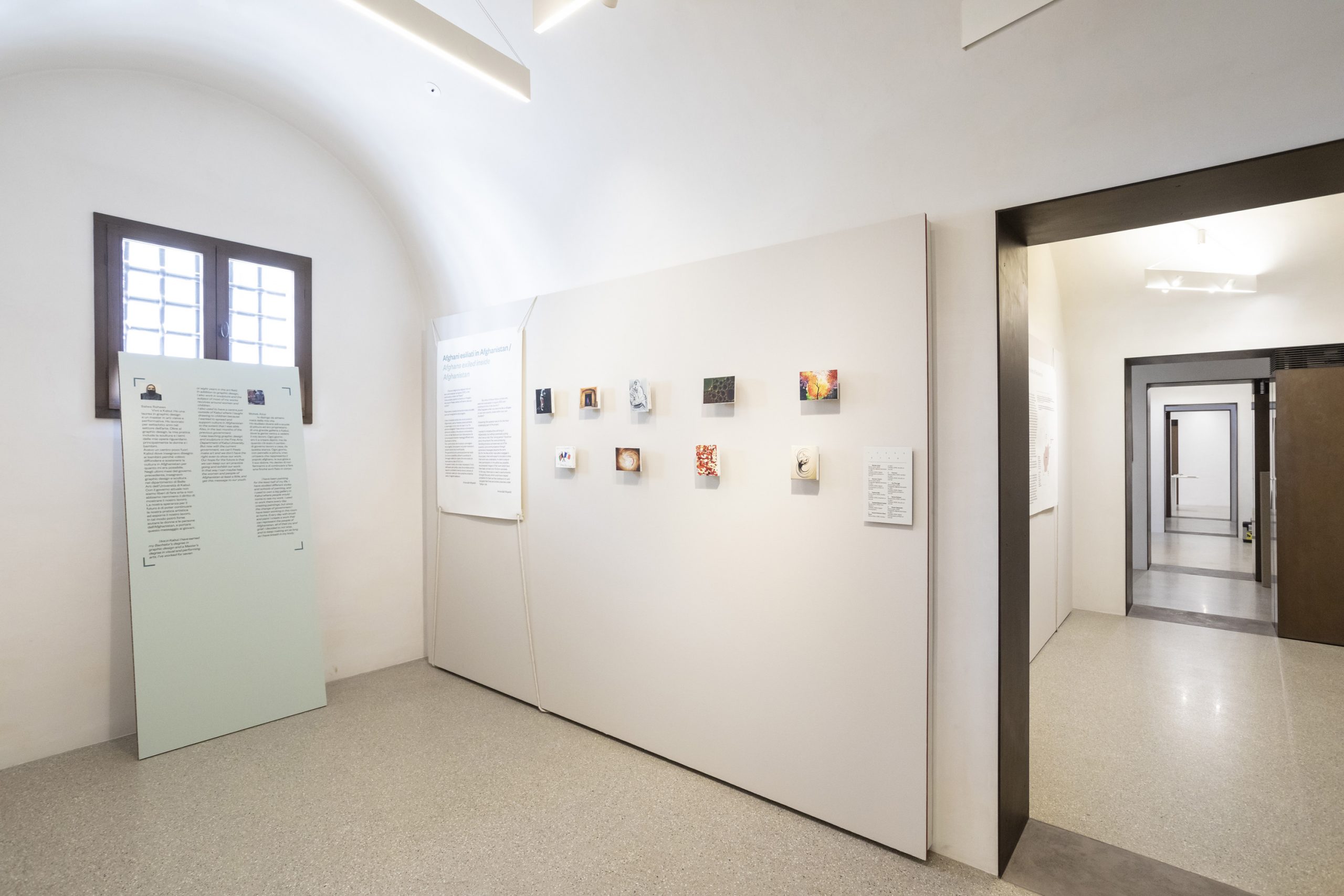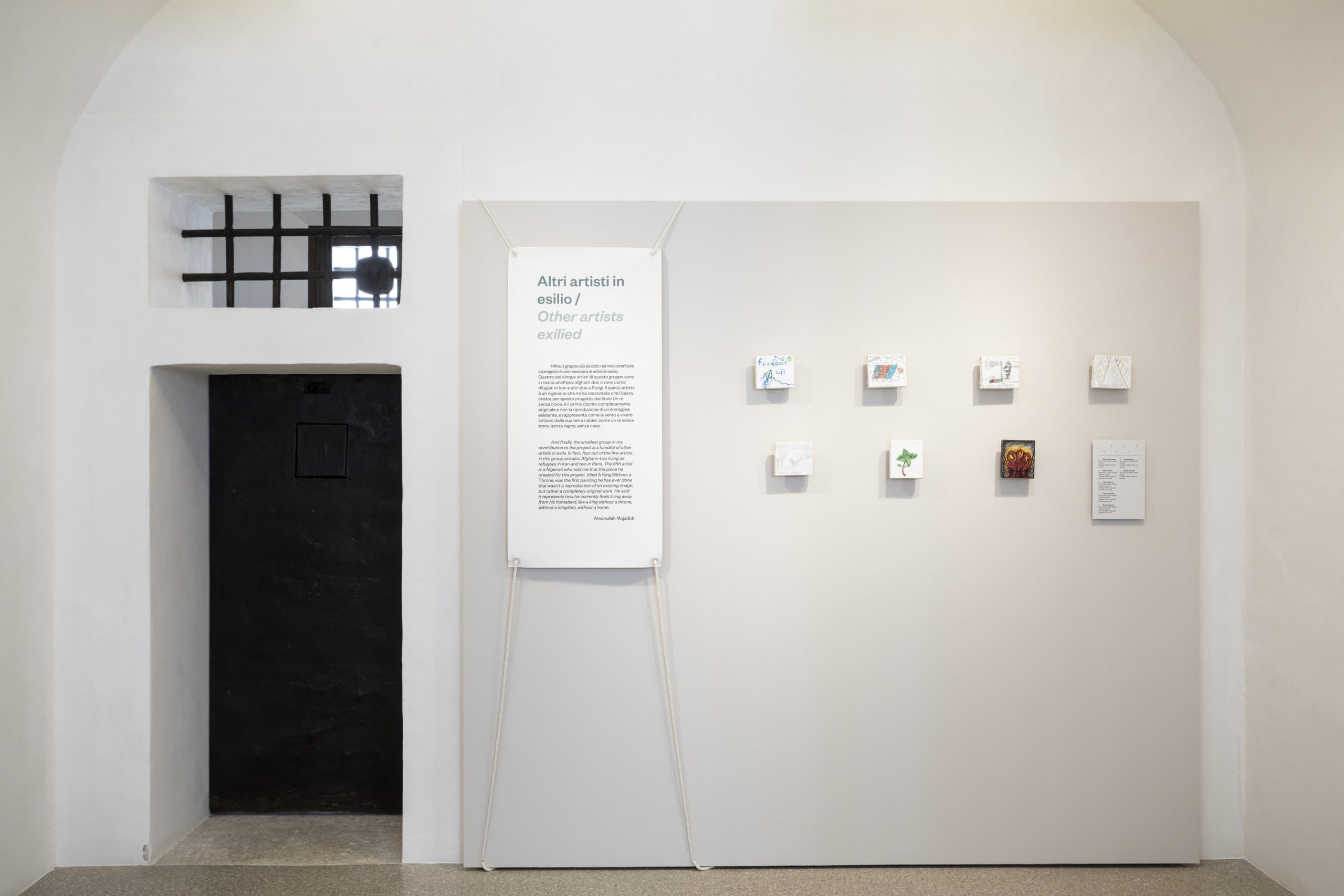
Afghanistan - The Art of Resilience
Amanullah Mojadidi
Artist and Curator
By the summer of 2021, I had spent the last several years managing a multi-year program in support of Afghanistan’s intangible cultural heritage, which included visual, literary, and performing arts of all kinds. But after almost 15 years of working in support of contemporary art and culture in Afghanistan as an artist, curator, and project manager, it was that same summer that I found myself sadly witnessing what felt like a curtain being quickly drawn closed, as the Taliban completed their takeover of the country by entering the capital city Kabul in August without a bullet being fired.
Their return to power sparked an international effort to evacuate Afghans whose lives might be at risk, which included artists and cultural actors whose previous and current work could have been seen as violating the Taliban’s restrictions on performance, literary content, and/or visual imagery. By November of that same year, the program I was managing, and all the various arts and culture projects being supported within it, were closed and a great number of friends, fellow artists, and colleagues were now living in Europe. The idea was therefore to do an Imago Mundi collection and publication of evacuated Afghan artists. It was then that the Foundation told me about this project.
What resulted from my participation were four distinct “populations”, if you will: the Rohingya refugees in Cox’s Bazaar, Bangladesh, Afghan evacuees now living in Europe, and a few other Afghan and Nigerian artists-in-exile in Iran and France. The fourth group is made up of Afghan artists who are still living inside Afghanistan, where they live almost like refugees, or foreigners, in their own country, due to the restrictions that the Taliban impose on their artistic production.
Afghans exiled inside Afghanistan
But what of those Afghan artists who were not evacuated in August 2021, and continue to live in the country? What happens when you become like a refugee in your own country, exiled within your own borders? Answering this question was by far the most challenging part of the project. I wanted to include artists still living in Afghanistan, but without potentially putting their lives at risk if the “wrong person” found out about the artwork they were producing. Sending physical canvases was out of the question, and communications through ephemeral messages became the norm. But for the few artists I was able to engage in the project, their enthusiasm to be able to show their work was undeniable. In order to ensure their participation in the safest way possible, we accepted images of their work which have then been printed onto 10x12cm canvases. In this way, there was no need to send artworks through the post, which could have created problems for them as they continue to try and navigate their lives and artistic practices under Taliban rule.
Amanullah Mojadidi
Salwa Raheen
I live in Kabul. I have earned my Bachelor’s degree in graphic design and a Master’s degree in visual and performing arts. I’ve worked for seven or eight years in the art field. In addition to graphic design, I also work in sculpture and the subject of most of my works revolves around women and children. I also used to have a centre just outside of Kabul where I taught drawing to children because I wanted to spread and support culture in Afghanistan to the extent that I was able. Also, in the last months of the previous government I was teaching graphic design and sculpture in the Fine Arts Department of Kabul University. But now with the current government, we can’t freely make art and we don’t have the right even to show our work. Our hope for the future is that we can keep our art practice going and exhibit our work. In that way I can maybe help the women and people of Afghanistan at least a little, and get this message to our youth.
Moheb Attai
I have been painting for the least half of my life. I have studied different styles and schools of painting, and I used to own a big gallery in Kabul where people would come to see my work. I used to work there every day creating paintings, but since the change of government I have been working in this room at home. Every day with brush and paint I create a work that can represent the people of Afghanistan, all of their joy and grief. I decided to not stop, and to keep making art as long as I have breath in my body.
Afghans evacuated abroad
August 15, 2021
This is the day the Taliban effectively took control of Afghanistan after sweeping through the country province by province, until they seized the capital city of Kabul. This was the precise moment that led to an international evacuation effort to help Afghansartists included-whose lives could be at risk to leave the country. Although exact numbers are difficult to come by, tens of thousands of Afghans were evacuated in the months following the Taliban takeover, primarily to Europe and the United States. After 20 years of significant investment in the arts from foreign nations, international donors, and the Afghan government itself, these artists now found themselves stateless in some of those same foreign countries, having suddenly and drastically left behind their homes, families, and loved ones. The chaos of the evacuation, the transitory refugee camps, the fear for women’s rights in Afghanistan, the uncertainty of their futures in foreign lands, and the homesickness for a country they have left behind can all be palpably seen, even felt, in the works they have created.
Nawabi Shawali
Unfortunately migration has been around a long time and affects people from around the world because of war. I don’t know when it may have started exactly, but it has been happening for a very long time such as in African and Asian countries, one of which is Afghanistan. A lot of Afghans have had to go to the USA, Europe, Australia, and elsewhere; and I’m included in this as most of my life has been spent in migration. I was about 16 years old when I migrated to Pakistan and then Iran, and spent about 16 or 17 years there. Then in 2010 I was able to return to my own country and build a life for ourselves there. But the events of August 2021, when the Taliban took over Afghanistan, led us to once again migrate and we came to France where we currently live. I am hopeful that one day this experience will end so that no one has to become a refugee and that there is no war anywhere so everyone can live in peace, brotherhood, and unity in their own countries, from wherever they are in the world. That there will be no more need for migration.
Naseer Turkmani
I am a photographer and visual artist from Afghanistan. It’s almost a year and a half that I’m living in France and the subjects of my work in Afghanistan were mainly two types – identity, which I expressed through collage, even digital, painting and calligraphy, and documentary photography. Since living in France, I’ve completed a series of photos titled Goodbye, which I took of Afghan artists during the evacuation, after they arrived in the camps, as well as up to when they could begin to live more normal lives. I’ve also worked on a short documentary film in Paris, of Afghan migrants who are homeless or struggling to build their lives. Being a refugee has its difficulties, such as a new language, new culture, new everything. I’m hoping that over time, as my language skills get better, I am here longer, and I can continue working here so that things will improve.
Other artists exilied
And finally, the smallest group in my contribution to the project is a handful of other artists in exile. In fact, four out of the five artists in this group are also Afghans-two living as refugees in Iran and two in Paris. The fifth artist is a Nigerian who told me that the piece he created for this project, titled A King Without a Throne, was the first painting he has ever done that wasn’t a reproduction of an existing image, but rather a completely original work. He said it represents how he currently feels living away from his homeland, like a king without a throne, without a kingdom, without a home.
Amanullah Mojadidi
Razieh Alavi
I was born in 1989 in the province of Daikundi, Afghanistan. I write poems, perform in theatre, and work with photography. Since 2007 I’ve been working in the theatre in Mashad and I’ve played different roles. For the last four years I have been working mainly in photography and I really like it. I am a refugee in Iran, which brings with it a lot of difficult experiences. In these last years, a lot of Afghans have come to Iran. A few days ago I went to take pictures in an Afghan family’s home who came illegally to Iran. The mother told me a very interesting and troubling story about all the severe difficulties they experienced while they were crossing into Iran. Her eight-year-old daughter asked where they were going and the mother replied that they’re going to Iran and the girl asked “Where is Iran?” Her mom told her that Iran is a good place but a few days after arriving the girl told her mom that there’s nothing good here-we have no family, no friends, so what is good about it? Refugees in Iran face a lot of difficulties in school, at the bakery, and it’s only because they’re Afghan refugees. What I want to show through my photography is the effect of immigration on children, so most of the photos I take are of children, in particular Afghan working children. I myself have a nine-year-old brother and we go out together to take pictures. I would love to show these photos in an exhibition one day.




























